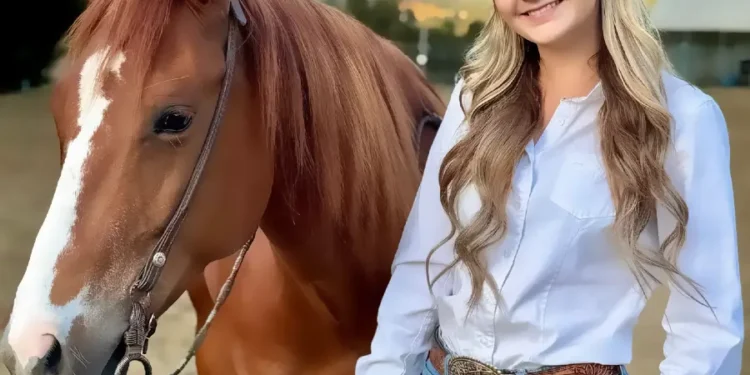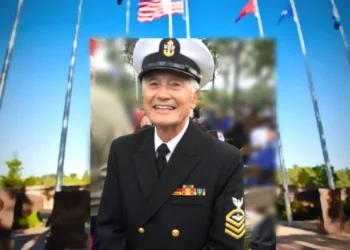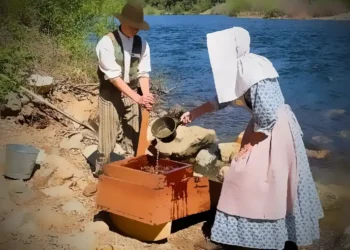PLACERVILLE, Calif. — June 27, 2025 —
El Dorado County is sending one of its own to the national stage. Aubrey Gist, a rising youth talent from Placerville, has been named the 2025 Rafter P Youth Award recipient by the National Cutting Horse Association (NCHA) and Rafter P Construction, an honor that recognizes exceptional promise in the sport of cutting.
The prestigious award includes financial support and travel to Fort Worth, Texas, where Gist will compete in the 2025 NCHA Great American Insurance Group Summer Cutting Spectacular and the NYCHA Holy Cow Performance Horses Youth World Finals. The award also provides entry into the NCHA Foundation Scholarship Cutting, giving Gist the chance to compete and connect with top youth riders from across the country.
“I grew up doing high school rodeo and thought it would be fun to add cutting as an event last year,” Gist said. “Little did I know after my first lesson I’d be hooked!”
The 17-year-old’s rapid rise in the cutting world caught the attention of award sponsors, who cited her dedication and enthusiasm for the sport. According to a statement from the NCHA,
“Aubrey embodies the spirit and future of cutting. Her drive and positivity are exactly what this award was designed to recognize.”
Gist also emphasized the importance of creating a bridge between youth rodeo and cutting, stating,
“I plan to advocate for the alliance between the NCHA and NHSRA—it’s a great gateway to bring new youth into our sport.”
Cutting, a western riding event that involves a horse and rider separating a single cow from a herd, is known for its skill, agility, and intense concentration. With only a year under her belt, Gist’s commitment and talent have already earned her national recognition.
The award comes at a critical time when youth participation in rodeo and equestrian sports is both challenged and championed. Programs like this not only reward individual achievement but also foster long-term growth in the sport.
“Aubrey’s win is a proud moment for Placerville and a reminder that talent can bloom quickly when matched with passion,”
said Jennifer Mahoney, a local 4-H coordinator familiar with youth equestrian programs.
As Gist prepares for the summer finals in Fort Worth, her hometown and horse community will be cheering her on from the foothills of El Dorado County to the national arena of Texas.
A cutting horse is a specialized working horse trained to separate a single cow from a herd and prevent it from returning—a skill known as “cutting.” This ability originated from practical ranch work in the American West and evolved into a competitive sport known as cutting, sanctioned today by organizations like the National Cutting Horse Association (NCHA).
Historical Significance of Cutting Horses
🐄 Ranching Roots (1800s–early 1900s):
Cutting horses were originally indispensable tools for cowboys and ranchers in managing livestock. When herding cattle for branding, doctoring, or shipping, a skilled horse was needed to isolate one cow from the herd. These horses were selected for their cow sense—an instinctive ability to anticipate and mirror a cow’s movements.
“Back then, your cutting horse was your partner, your co-worker, your best bet at getting the job done,” said western historian Mike Cox. “It wasn’t about show—it was about survival and work efficiency.”
🐎 From Range to Arena (1940s–Present):
By the mid-20th century, ranchers began informally competing to show off their horses’ cutting abilities. This led to the founding of the NCHA in 1946, formalizing the sport. Competitions grew across Texas, California, and the greater American West.
Today, cutting is judged on a horse’s ability to instinctively respond to a cow without guidance from the rider—meaning reins are loose, and the horse must think for itself.
Key Traits of a Cutting Horse
-
Athleticism and agility: Quick footwork, sharp turns, and bursts of speed.
-
Cow sense: Natural instinct to read and track cattle.
-
Strong hindquarters: For stopping and pivoting.
-
Mental focus: Trains to act independently and make split-second decisions.
Popular breeds include the American Quarter Horse, known for speed, intelligence, and responsiveness—ideal for cutting tasks.
Cultural & Competitive Importance
Cutting horses are deeply woven into the tapestry of western heritage, alongside rodeo, reining, and branding traditions. Beyond competition, they symbolize:
-
The working cowboy ethic.
-
The evolution of ranch culture into sport.
-
A unique horse-rider bond based on trust and instinct.
Competitions today offer high-stakes prizes, college scholarships, and international recognition, all while preserving a historic skill passed down through generations.










